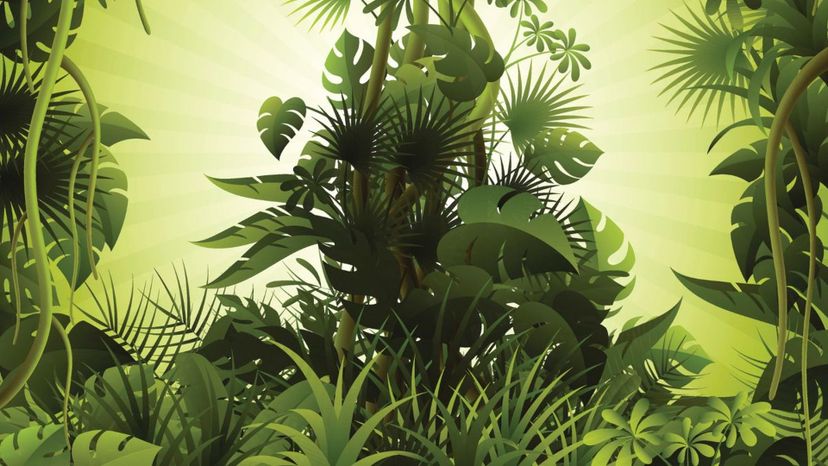
About This Quiz
Australia is one of the most unique places in the world, with six different climate zones and numerous kinds of unique flora and fauna found on the island nation.
From the arid desert to the sprawling grasslands, to the tropical northern and eastern regions to the southern temperate climes, Australia's climate diversity creates a home for over 275,000 species of flora, including 24,000 plant species.
For millions of years, Australia was untouched by humans until approximately 65,000 years ago, when the first Aboriginal peoples made their way to the island by sea.
Since the colonization of Australia, which began in 1788, extensive logging of trees has been an ongoing issue for the country's various ecosystems, with native trees being threatened and endangered, including multiple species of acacia trees (locally known as wattles), woolly bush, banksia, emu bush and grevillea. Invasive trees imported to Australia have endangered native trees. Unsustainable logging has also threatened Australia's fauna, with animals on the brink of extinction.
Because of Australia's varied climates, there are different types of trees--conifers, hardwoods and softwoods--but not many deciduous trees (trees which lose their leaves). But what the land Down Under lacks in autumnal glory, it makes up for with its flowering trees.
We hope you enjoy leafing through this quiz of Australia's trees!
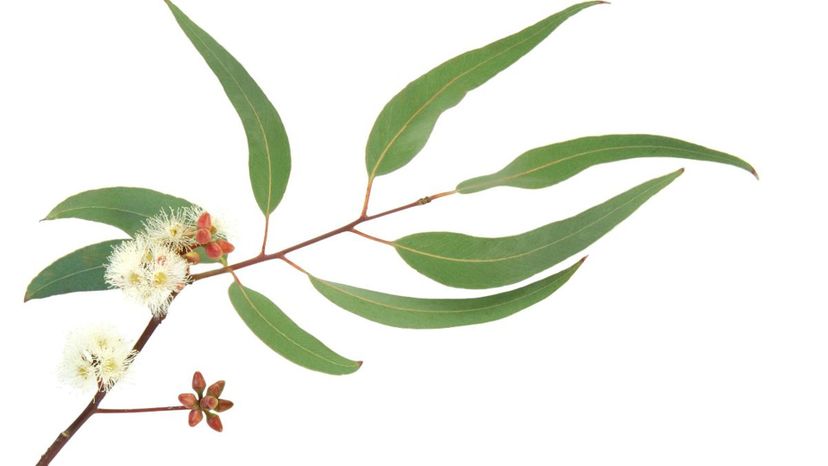
You may be surprised to learn that this flowering tree usually has evergreen leaves, meaning they never shed. There are over 700 species of eucalyptus, and most of Australia's forests are comprised of these trees.

The bottlebrush tree has over 50 species. You'll find them growing in the more temperate zones of Australia. And as you can imagine, it got its name for the bright flowers that resemble bottle brushes.
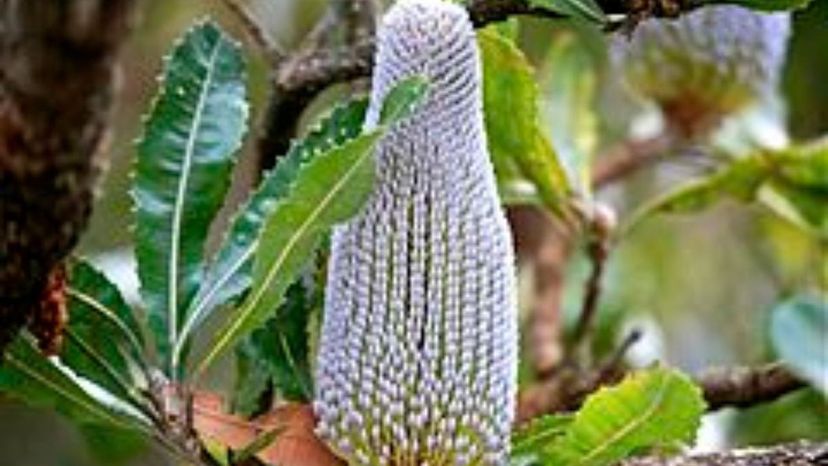
Named after naturalist and botanist Sir Joseph Banks, the Banksia can be either a bush or a tree. There are over 170 species of Banksia with varying flower colors.
Advertisement
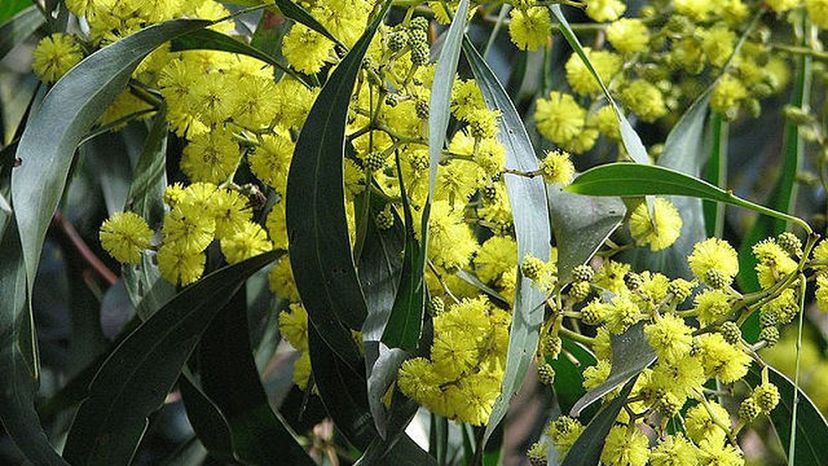
The golden wattle (Acacia pycnantha) is Australia's national flower. The golden wattle's gold color is represented in Australia's national sporting colors of green and gold, a tradition started back with the national cricket team in the late 1800s.
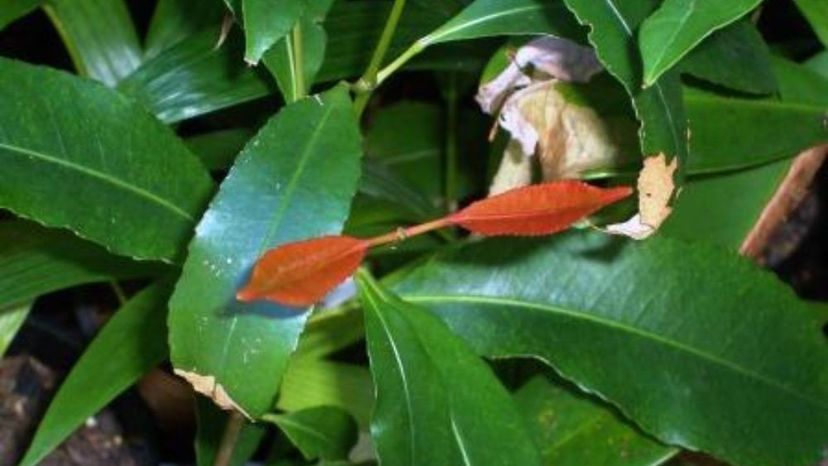
Coachwood is not only a fragrant, flowering tree. The wood can be used for more decorative purposes, such as a veneer.
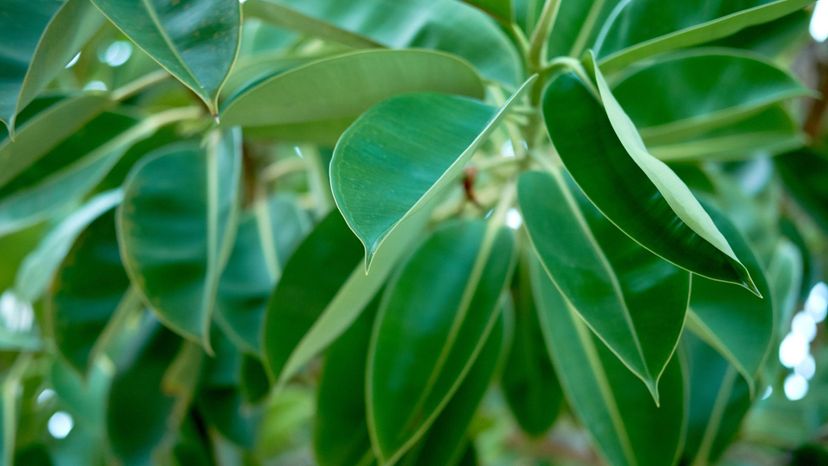
Hill's weeping fig (Ficus microcarpa var. hillii) has made its way from the northern state of Queensland to the more southeastern regions of New South Wales. This tree can be grown indoors, just like another common houseplant: ficus bejamina.
Advertisement
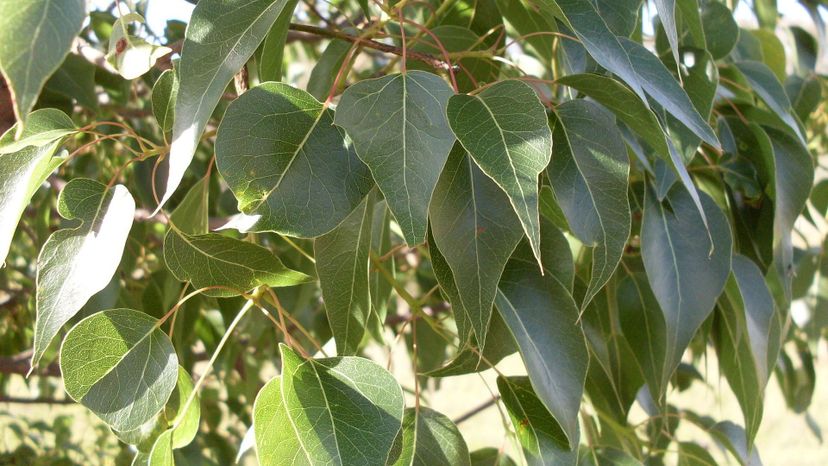
Kurrajong (Brachychiton populneus) is another Australian tree that has multiple uses for humans. This tree is native to Australia but is now planted in other places such as the United States and South Africa.
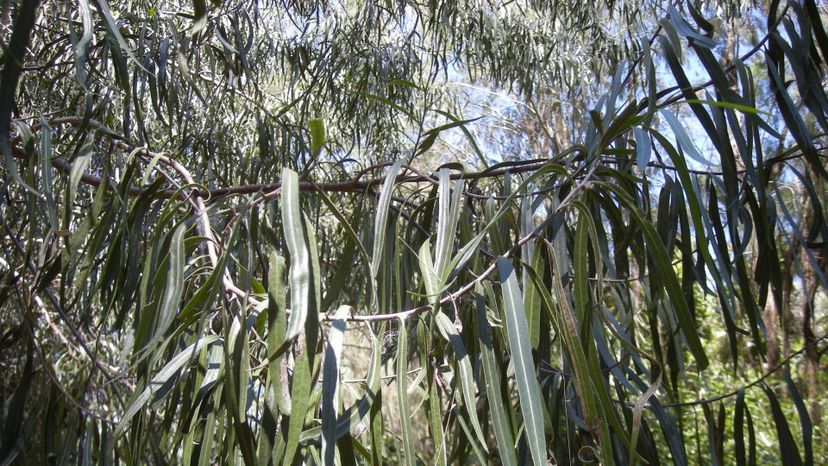
The wilga tree (Geijera parviflora) has some great uses including as a nutritious animal feed for livestock. It also can produce a flavorful honey, and burning its leaves can repel mosquitoes.
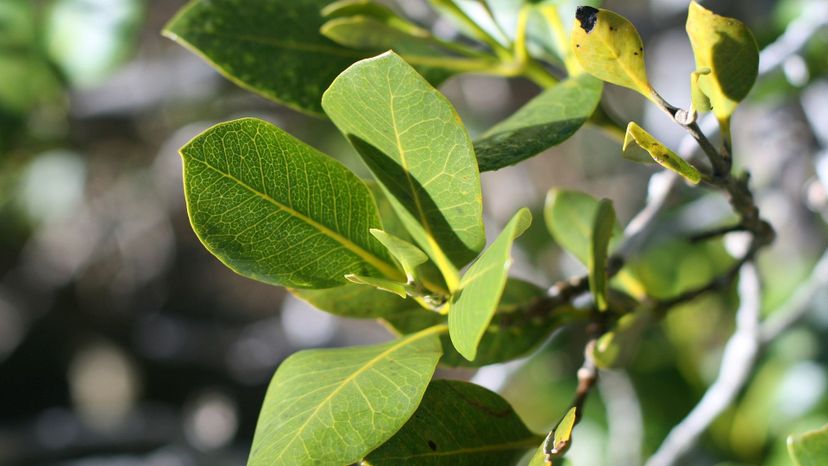
Grey mangrove (Avicennia marina), also known as white mangrove, can be best found where freshwater and saltwater mix. It also has a special root system above the waterline that absorbs oxygen for the tree.
Advertisement
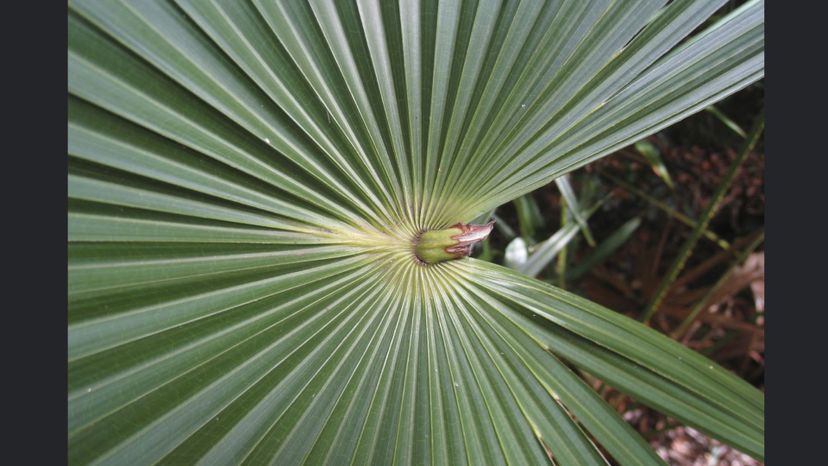
The heart of a palm tree (known as heart of palm) is its unopened bud. The cabbage palm's heart has been known to taste like cabbage, thus its nickname. Known scientifically as Livistona australis, the cabbage-palm tree's white flowers have also been said to look like cabbages.

The grass tree (Xanthorrhoea) has over 66 different species, all native to Australia. It's a tree that is seen to be emblematic of the Australian bush, and is special to both indigenous and nonindigenous Australians.
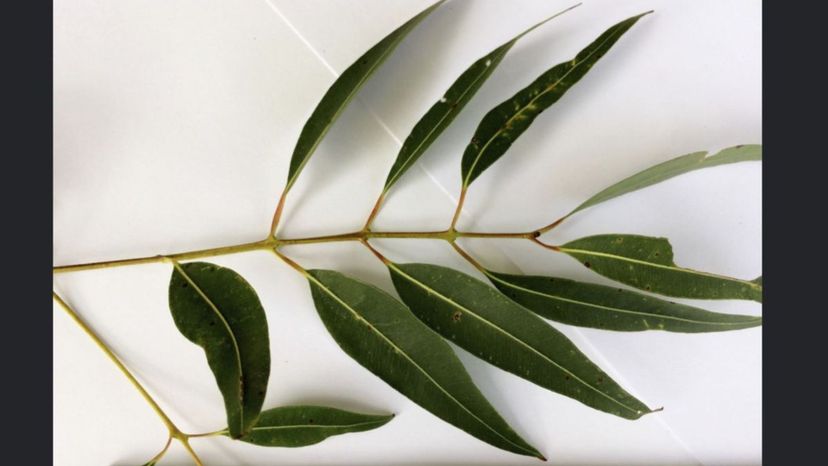
The smooth-barked apple (Angophora costata), is an evergreen tree that can grow quite tall--as high as 82 feet. The pinkish-orange bark is a sign of new bark, while the gray bark is old bark that will eventually shed in the springtime.
Advertisement
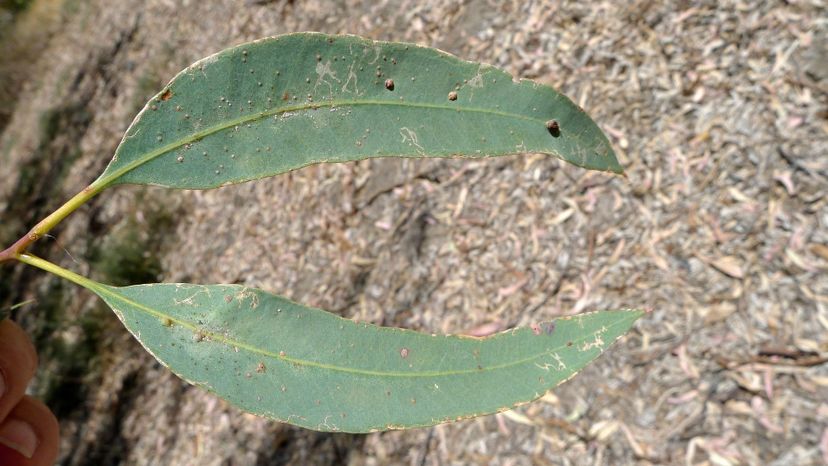
Because of its deep root systems, eucalyptus camaldulensis can be found in arid regions, but is primarily found in wetlands next to rivers and streams. These massive trees can live from 500 to 1000 years.
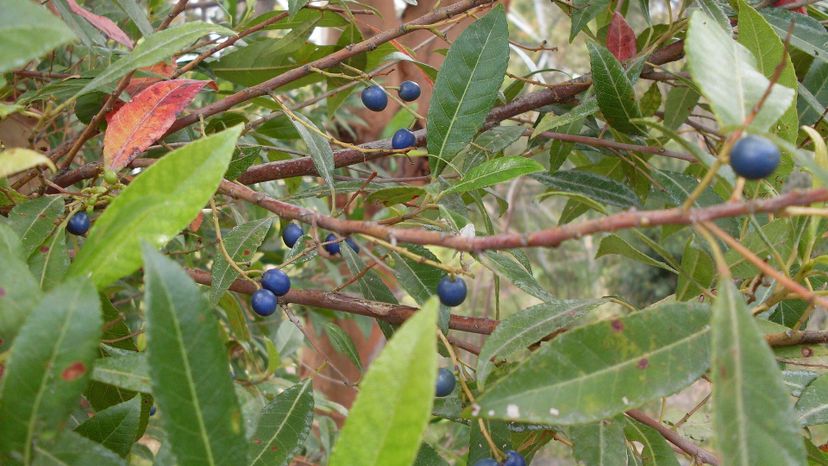
Blueberry ash (Elaeocarpus reticulatus) has many decorative qualities besides its red leaves. It's called the blueberry ash because of the blue berries which many birds are drawn to eat. This tree is also called fairy petticoats because of its white, bell-shaped, fringed flowers.
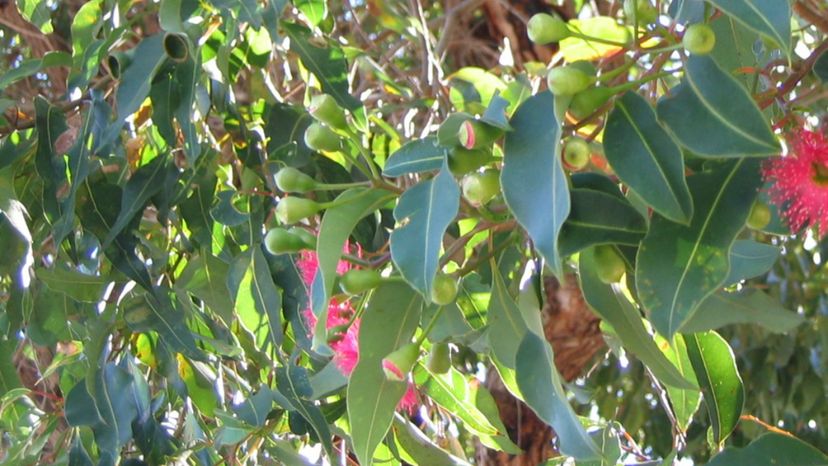
The red flowering gum tree (Corymbia ficifolia) has a very limited area where it grows naturally, primarily in the southern parts of the Western Territory. Now it's more widely cultivated and can be found as far east as Sydney.
Advertisement
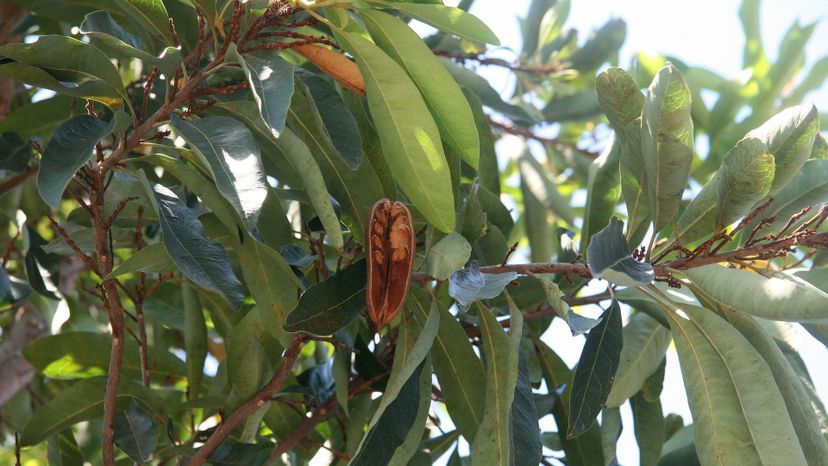
The Queensland tree waratah (Alloxylon flammeum) has been affected by extensive logging and clearing in its natural habitat. Although it can be cultivated, it is listed as vulnerable according to the Environment Protection and Biodiversity Conservation Act (EPBC).
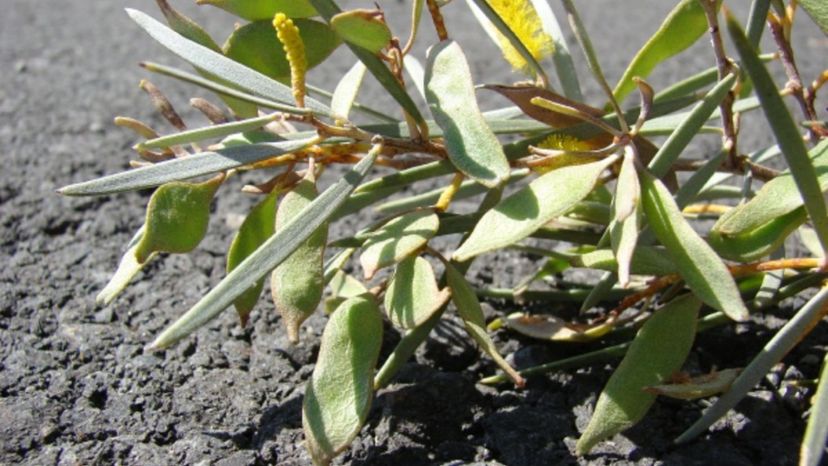
Unlike most acacias, the mulga (Acacia aneura) also known as mulga wattle, can live for 50 years or more. Due to how it channels water to its main root, mulgas can outlast droughts. This is why in more arid regions, you can see nothing but mulgas.

Red ash (Alphitonia excelsa) goes by other names, such as soap tree, leatherjacket and Coopers wood. You'll find this tree growing on the northern and eastern coasts of Australia.
Advertisement
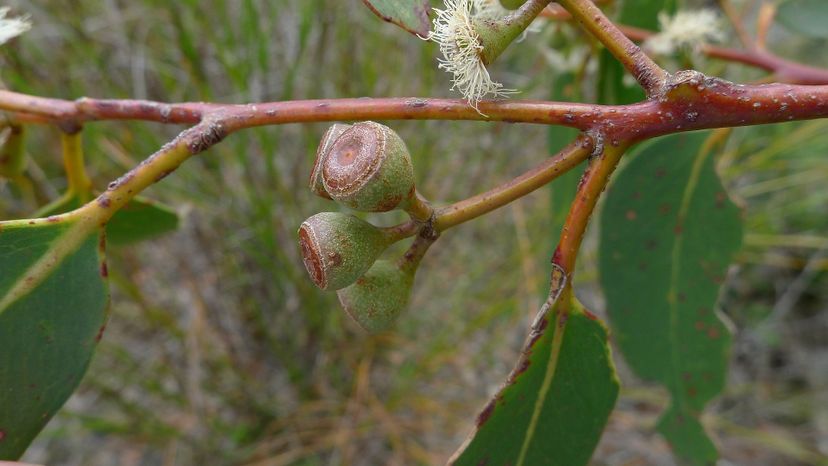
The scribbly gum (typically Eucalyptus haemastoma, Eucalyptus racemosa and Eucalyptus sclerophylla) has its distinctive markings made by scribbly moth larvae tunneling their way through the tree. The tree co-exists with these larvae without being harmed.
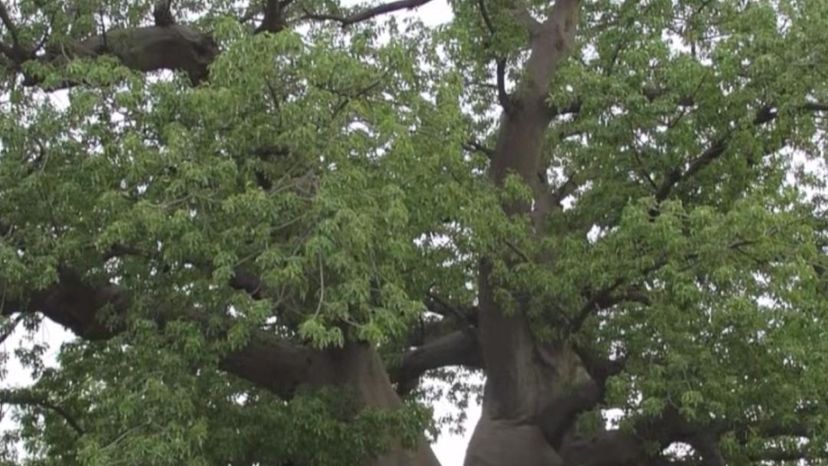
The boab (Adansonia gregorii) is one of the few deciduous trees in Australia. During the dry season is when its leaves are shed.
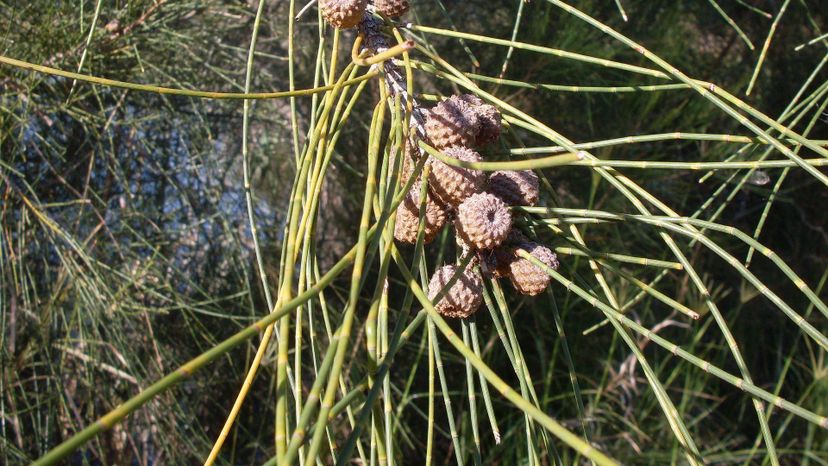
Sheoak (Casuarina) is not a pine tree, although it is an evergreen tree. Indigenous Australians have used the wood for boomerangs, clubs and shields. In the past, the wood has also been used for fencing and shingles, and now it's used for cabinetry and detailed floorwork.
Advertisement
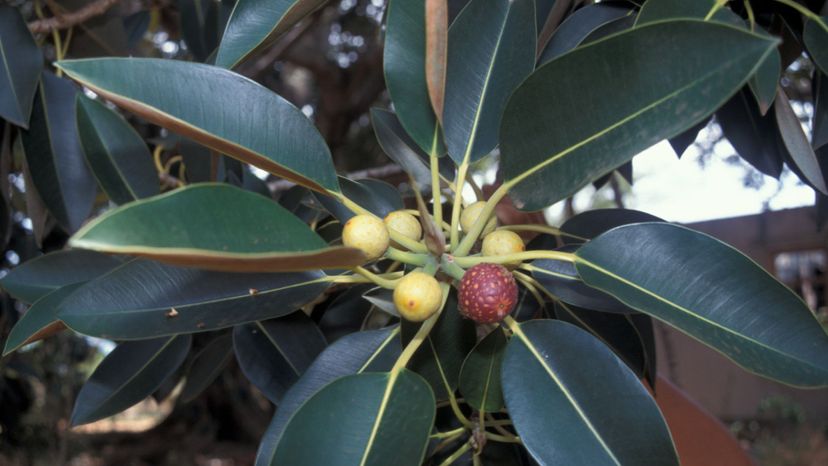
The Moreton Bay fig (Ficus macrophylla) is also known as the Australian banyan. Because of its massive size and extensive root system, you'll see this tree in spacious parks as well as in the rainforests of Queensland.
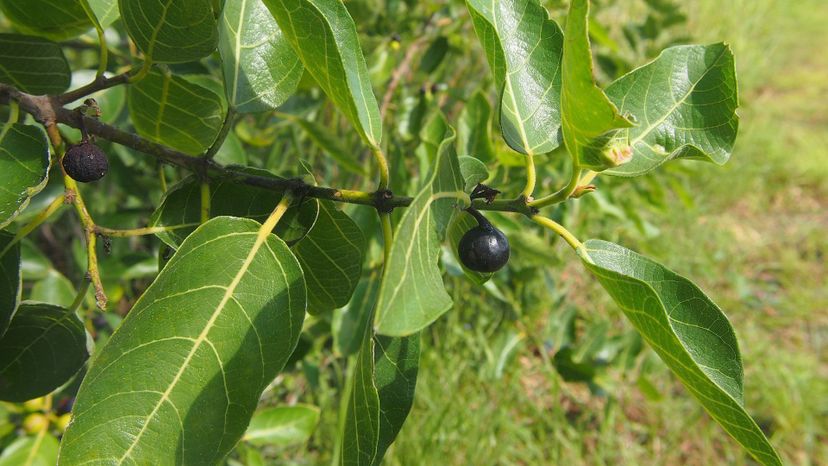
The sandpaper fig (Ficus coronata) has multiple uses. The leaves are rough enough to be used as a finishing tool for wood and also have medicinal uses. The fruit of the tree is also edible for humans.
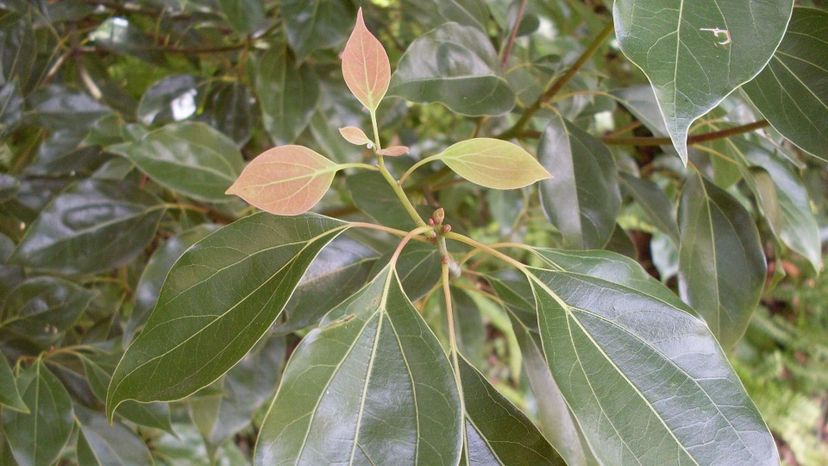
Camphor laurel (Cinnamomum camphora) came to Australia in the early 1820s as a garden ornamental plant. It replaces native trees such as the species of blue gum tree (Eucalyptus globulus), which is what koalas prefer to eat.
Advertisement
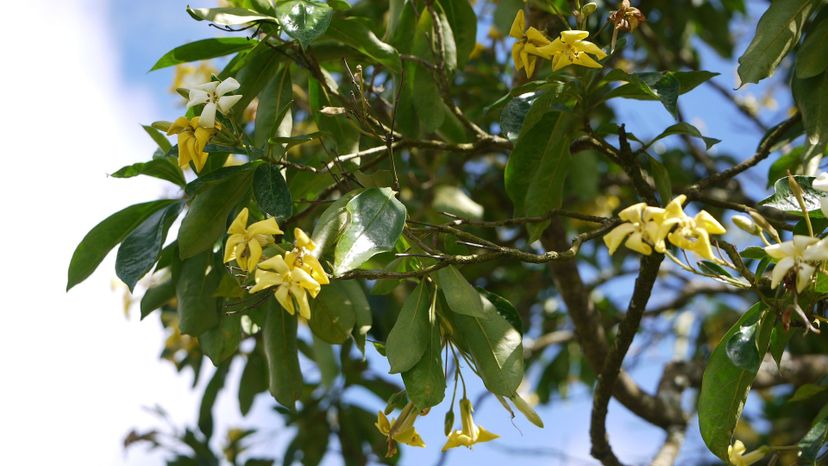
Native frangipani (Hymenosporum flavum) is actually not related to frangipani (Plumeria). You can typically find this tree in the rainforests of Queensland and New South Wales, but it can also be cultivated and can be seen in urban and suburban spaces.
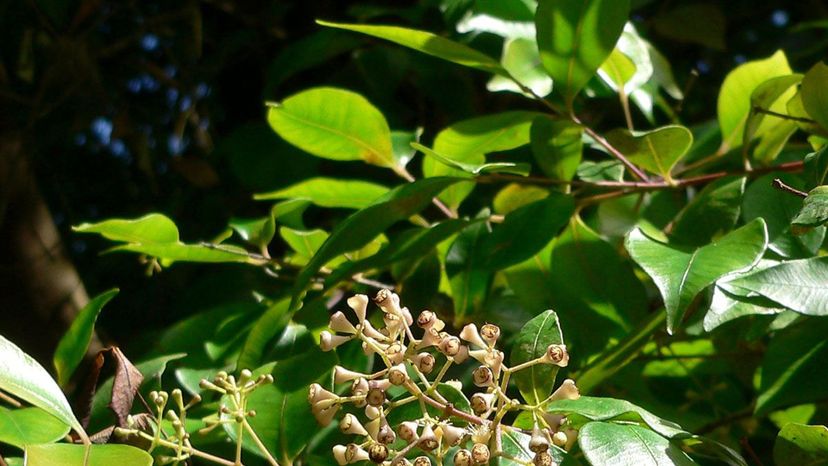
Lilly pilly (Syzygium) has many different species, some which bear fruit called riberries (or sometimes called lillipillies). Syzygium smithii is typically the species most commonly associated with lilly pilly.
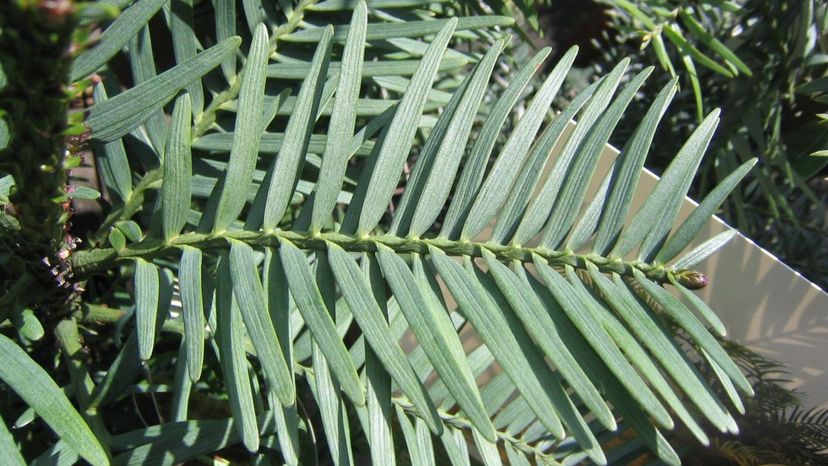
The Wollemi pine (Wollemia nobilis) was discovered in 1994. Beforehand, it was only known via fossils. This tree is now on the critically endangered list.
Advertisement
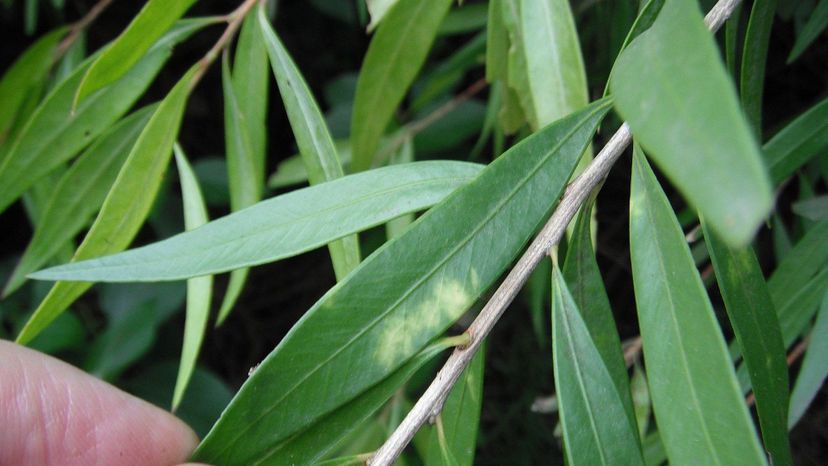
Paperbarks (Melaleuca) are also known as tea trees. Melaleuca alternifolia is the species from which tea tree oil is derived.
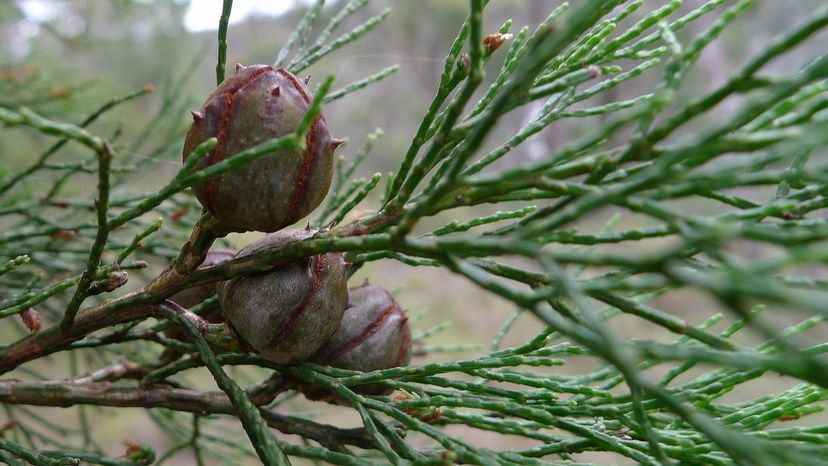
The cypress-pine in Australia has two genuses: Callitris and Actinostrobus. You'll find both of these mainly in Western Australia.
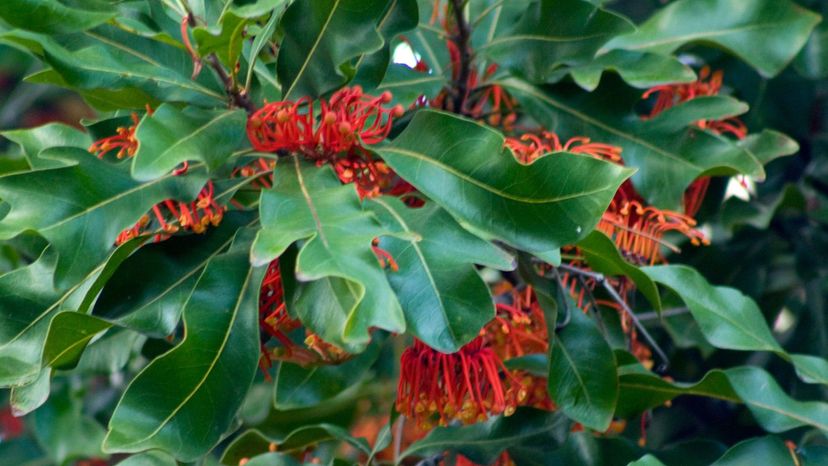
The firewheel tree (Stenocarpus sinuatus) not only has colorful leaves in the autumn. In the summer through the autumn, bright orange and red flowers come into bloom. You'll see this tree mostly in New South Wales and in Queensland.
Advertisement

Known for its fiery red blooms, the Illawarra flame tree (Brachychiton acerifolius) is also a deciduous tree. If a tree is in a wetter climate during the winter, then the blooming cycle will become more erratic, i.e., the whole tree may not bloom or the blooming occurs later in the summer vs. late spring.
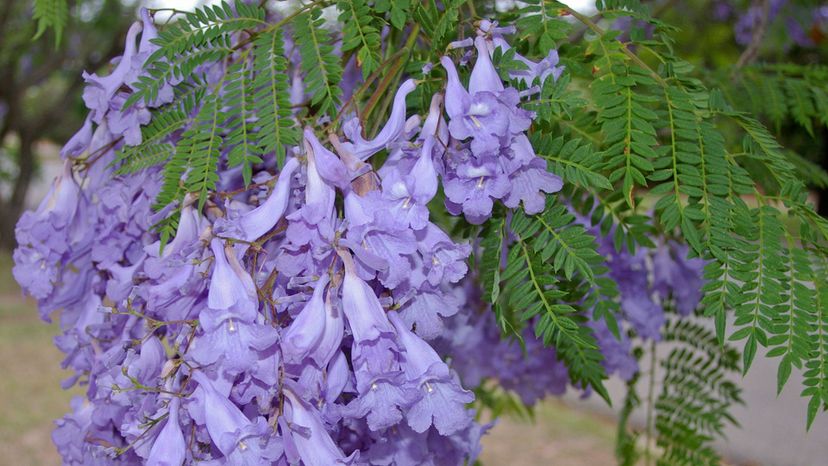
Jacaranda is also the genus name of the tree, meaning fragrant. From Sydney to Brisbane, you can see jacarandas bloom during October and November.
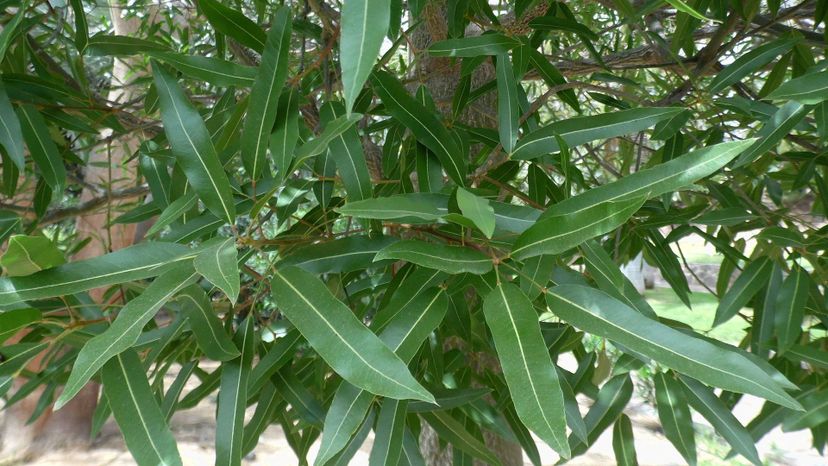
Lacebark (Brachychiton discolor) gets its name from the texture and coloring of the tree's bark. As the tree ages, the bark changes from a green to a gray color.
Advertisement
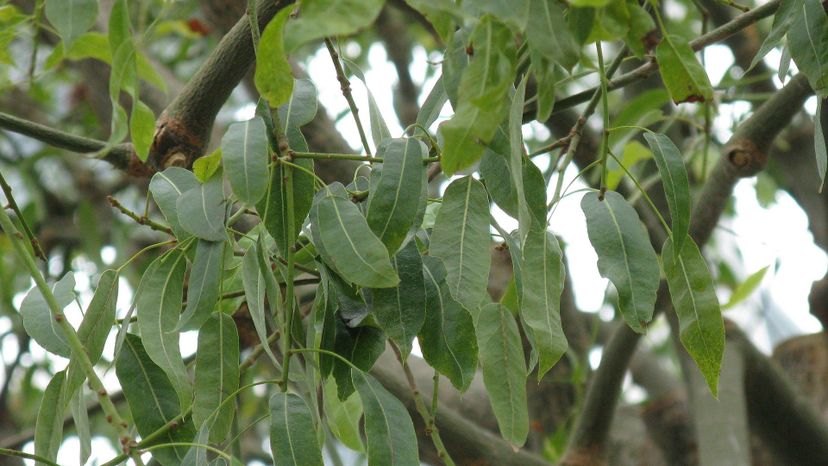
The Queensland bottle tree (Brachychiton rupestris) comes from the same family as the boab tree, but does not grow as high. Indigenous Australians found this tree to be quite useful (e.g., creating twine, rope, and fishing nets from the inner bark).

The brush box (Lophostemon confertus) goes by many other names, including Queensland brush box, pink box and vinegartree. This tree can withstand air pollution, disease and pests and is relatively easy to maintain.
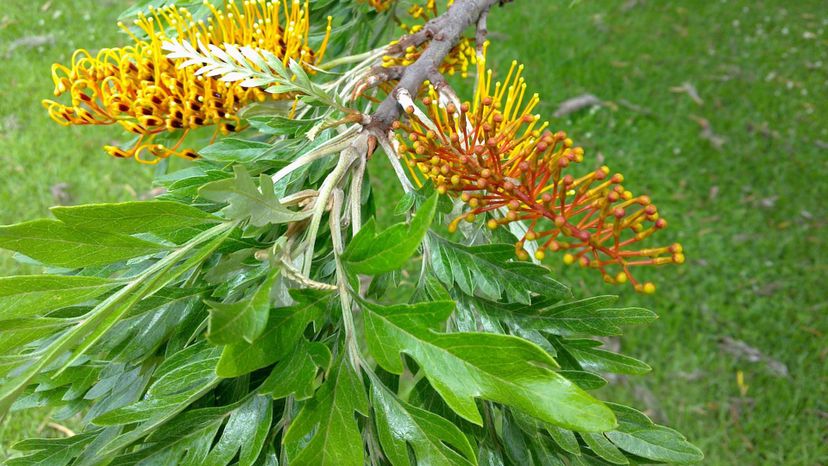
Silky oak (Grevillea robusta) is one of the few species of Grevillea that can grow into a tree--and it the largest. Its uniquely shaped flowers are why it's nicknamed the "toothbrush plant."
Advertisement
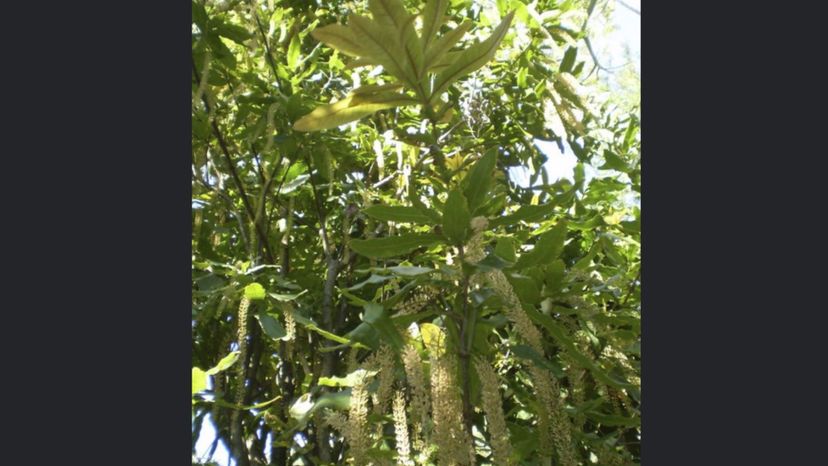
The macadamia tree has four different species and was the first cash crop for Australia by non-indigenous Australians. But although it is a major crop for Australia, it is considered to be vulnerable and is protected under conservation law.
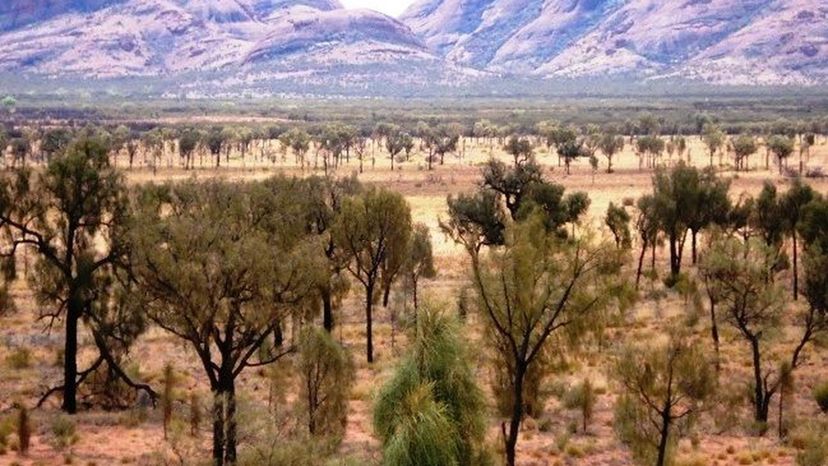
The thick bark of the desert oak (Allocasuarina decaisneana) is what makes this tree so tough, protecting it from fires. It can withstand drought due to its taproot that grows deep underground.
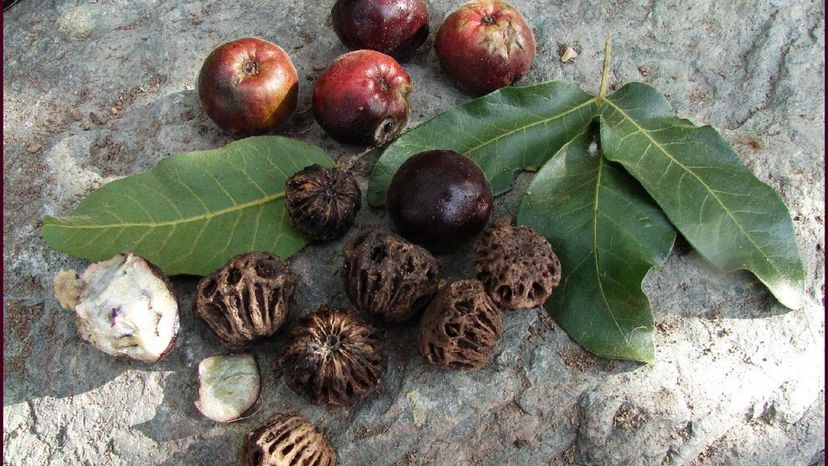
The Burdekin plum (Pleiogynium timorense) is also known as the tulip plum. The fruit itself has indentations all around it which resemble the pit inside.
Advertisement
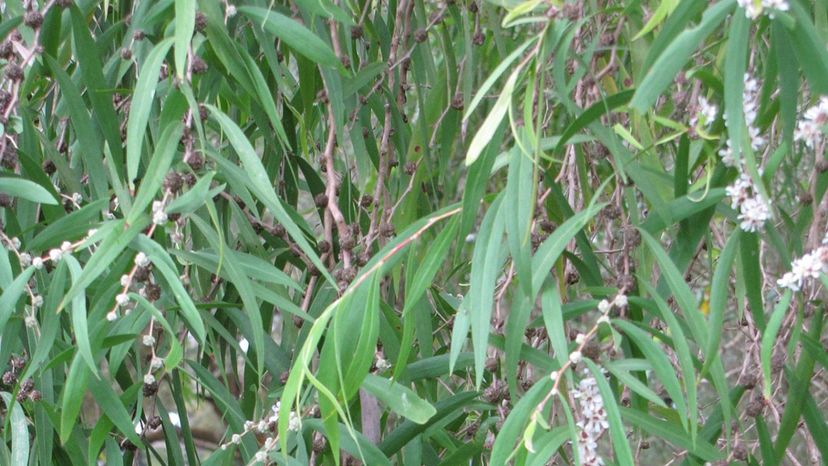
Willow myrtle (Agonis flexuosa) goes by a few different names including Western Australian peppermint, weeping peppermint, and peppermint. When its leaves are crushed, a minty fragrance is released. But this isn't to be confused with the hybrid plant peppermint--the willow myrtle just smells like it.